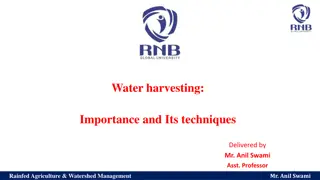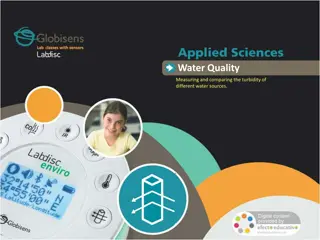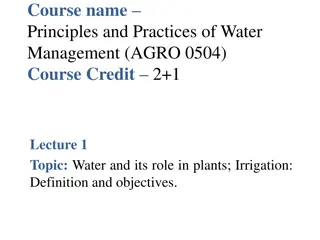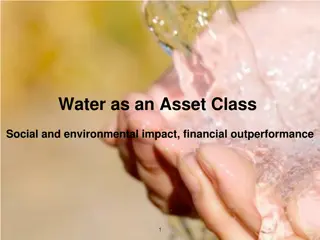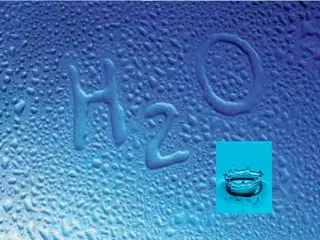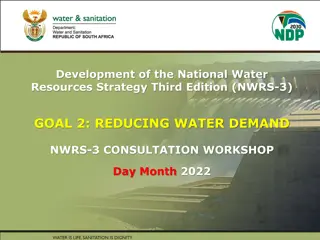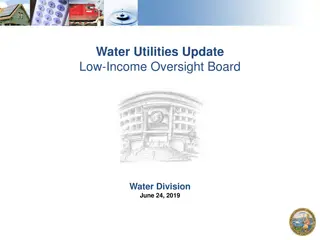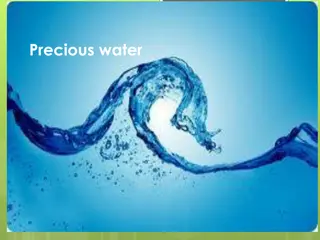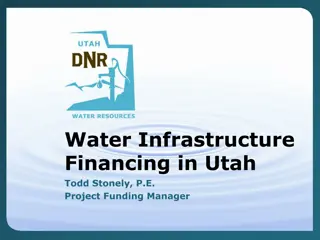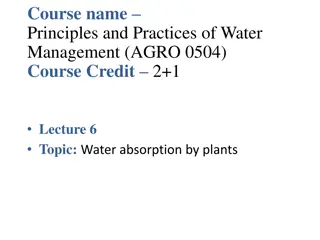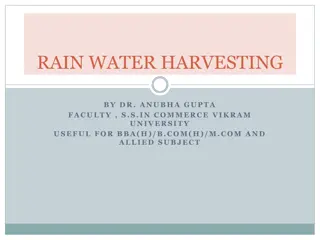Understanding Human Impact on Water Systems in Agriculture
Human activities, such as animal farming, can significantly impact the Earth's surface and water systems by introducing excess nutrients and waste runoff. This leads to eutrophication, soil erosion, and water contamination. Farmers are working on conservation practices to mitigate these issues, such as managing nutrient runoff and promoting water conservation on beef and poultry farms.
Download Presentation

Please find below an Image/Link to download the presentation.
The content on the website is provided AS IS for your information and personal use only. It may not be sold, licensed, or shared on other websites without obtaining consent from the author. Download presentation by click this link. If you encounter any issues during the download, it is possible that the publisher has removed the file from their server.
E N D
Presentation Transcript
Biology: Life and Earth Systems Human Impacts on Earth Systems Diedre Young MAT, Soybean Science Challenge Coordinator
NGSS STANDARDS Topic 6: Life and Earth Systems BI-ESS2-2 BI-ESS2-5 B16-ETS1-2 B16-ETS1-3 Topic 7: Human Impact on Earth Systems BI-ESS3-2 BI-ESS3-3 BI-ESS3-4
Human impact on the Earths surface can cause system feedbacks Animal Farming can cause changes to the Earth s surface (water and soil) by adding excess nutrients to the soil and local waterways from waste runoff. Excess waste translates into eutrophication in water and mineral damage to soil. Animal farming can also cause changes to the Earth s surface (water and soil) by removing plants (through eating and destroying) that hold moisture and soil in place. This translates into more contaminated water runoff and soil erosion.
Human impact on Water properties and Earth Systems Water is an excellent solvent which means it will dissolve animal waste. This means, waste will be incorporated into any standing water or water runoff on an animal farm. As water evaporates, it leaves high levels of waste behind. Rain will move this waste either to local waterways or into the ground. So how do farmers deal with this issue?
Water Pollution on Beef and Poultry Farms The good news about water is it does a great job of dissolving minerals and nutrients for our bodies to absorb. The bad news is it dissolves excess material in fields and pastures for the local ecology to absorb. Water contamination from beef and poultry manure can cause eutrophication of local waterways, hypoxia and pollution downstream as far as the Gulf of Mexico as polluted water enters streams and rivers. Polluted water can damage local wildlife and aquatic environments. So how do farmers stop pollution and still maintain a working farm?
Water Conservation on Beef and Poultry Farms: Working to solve the pollution problem. Farmers have been blamed for current pollution conditions in local waterways. In reality, farmers are actively working to keep excess nutrients on the farm to be used and recycled and out of our ecosystem. Keeping and processing excess nutrients on the farm means more plant biomass for cattle, less excess nutrient handling and storing, plus no off-site processing.
What conservation practices are farmers doing on their farms? Solving problems by engineering. Fertilizing evenly: By spreading excess nutrients throughout the farm area, buildup is eliminated, and nutrient retention is accelerated. Grassed Waterways: Grassed waterways reduce nutrient load as water is filtered by both the surrounding grass (before it reaches the pond) and by the water itself. Nutrient Ponds: Nutrient ponds break down excess nutrients. This water is in turn recycled back onto the farm as irrigation or as watering for local livestock. Aerating Soils: By adding aerator holes to the soil, water runoff is quickly absorbed, and nutrients are spread more evenly through the soil.
Farmers and Researchers: working together to solve problems with solutions that work for both sides. On site real-time monitoring of water quality to determine changes needed. Education by local researchers on the latest conservation methods. Stream bank restoration on farmlands. Controlled burns to reduce organic loads and increase water infiltration. Funding to protect local waterways. Farmers teaching farmers best conservation practices. Involving producers in the solution. Educating policy makers. Engaging the non-farming sector.
So how is this affecting you and me? Grassways, ponds and aerators are needed to keep nutrients on the farm and not in the water. Local watersheds meet the needs of our drinking water supply. By keeping nutrients on the farm, nearby watersheds are kept free of algal blooms, sediments and organics. Working together, we can protect our water resources and adequately irrigate crops. A win-win for all.
Check out this You Tube Video about how soil (a natural resource) helps clean water! https://www.youtube.com/wat ch?v=vDL6F6GkAzI


